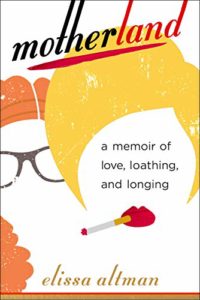By the time this post goes up, the news of Gourmet Magazine‘s demise will no longer be fresh, although it will certainly be raw. Those of us who have had an actual relationship with the magazine and who write about food for a living, and even those of us who don’t, will remain knocked off our collective axis for a while: Gourmet was arguably the first publication of its type in the United States. It was the New Yorker with a knife roll tucked under its arm. While Germany was busily marching into Paris and death and destruction were everywhere, Gourmet had the culinary cahones to make the most important point there was and is to be made about food: we all eat, and the world would be a far, far better place if we just stopped shooting at each other, and broke bread instead. Rich, poor, young, old, Jew, German, Briton, Turk, Greek, Parisian, Iraqi, Israeli, Australian, Norwegian, Icelandic, Tibetan, Czech. We all eat.
Goodbye Gourmet
Gourmet, January 1953 issue
In the coming weeks and months, the blogosphere and what’s left of the print community will be filthy with stories of What Gourmet Meant to Me and head-scratching reports on why it closed up shop and Bon Appetit didn’t; the latter is frankly a gruesome way of thinking about it and I will talk about the decision in an upcoming business column on The Huffington Post. But the truth is, the end of Gourmet is like a death: while I often made fun of it as a publication that assumed its readers all had freshly made glace de veau in their fridges, Gourmet was, in fact, the reason why my passion for food and food writing is what it is.
One day in 1984, I was sitting in my suite at Boston University. Someone had left an issue of the magazine in our living room. No one was around, it was a late afternoon, and so I picked it up and started reading. Buried in the middle of the book was the story of a young woman who had gone off to France to attend cooking school; there was a picture of her standing in a field, nose to nose with a Norman cow (and by that I do not mean a northern French lady of Wagnerian girth). In the article, the author wrote about the certain sweetness of northern French cheeses, and the way that some of them taste of fruit because the cows sometimes graze in fields of apple trees. That was it for me, right then and there: I was hooked, and if there had been a major in Culinary Anthropology at BU available to me, I would have switched programs and enrolled for another four years.
Sure, there were missteps and annoyances that irked traditionalists like me: the month that they ran an assortment of superlative chefs (Suzanne Goin and Eric Ripert among them) dressed as rock stars, I ranted and raved and threatened to cancel my subscription. I wasn’t crazy about the idea of featuring novelists and their recipes for things like macaroni and cheese, not so much because it was an obtuse way to attract other readers and increase subscriptions; I just knew, as a longtime editor, exactly how much it would cost the magazine. Then again, Laurie Colwin’s food writing, which was a recognizable thread in all of her novels, appeared in essay form almost exclusively in Gourmet, and without that novel/food essay connection, the world would not have had the pieces that have stayed with me for nearly a decade, like Stuffed Breast of Veal: A Bad Idea. She was brilliant, and Gourmet was smart enough to sometimes run stories not about delicious dishes that fed fancy dinner tables full of fancy people: anyone can do that. Instead, they published tales about culinary debacle. Laurie, and all of the other novelists who have written for Gourmet over the years tied together the facts of life and food and living and eating as universal constructs.
Some years back, when the first “new” Gourmet cookbook was in the works, I was asked to write the headnotes for a major chunk of the book: I had to write something like 500 headnotes in something like 3 weeks, around Thanksgiving. I went in to the offices to meet with Zanne Stewart, the executive editor, and she handed me a giant sheaf of clippings and a bag full of little micro-cassettes: on them, she had taped about a minute of information about each recipe I was headnoting. She said a lot of things like “um, this recipe accompanied an essay that was written by Joseph Wechsberg about Prague, in 1948.” And “this recipe for brownies came from a 1958 issue that we ran in the spring.” I was flummoxed, but the more time I spent listening to the tapes, the more I understood: people who were involved with this magazine were not merely editors cranking out content for content’s sake. The magazine was a part of their lives, at the cellular level.
When Susan and I celebrated her first birthday after we got together ten years ago, I was stumped about what to buy her; after all, a woman who keeps an early edition of Larousse Gastronomique on her bedside table is unique. Going through stacks of magazines at home in Manhattan, it hit me all at once: I went straight to eBay and found a set of 1953 Gourmets in perfect condition, and wrapped each of them individually. She was delighted, and I knew that I had found my soul mate, and someone who would take joy in all the glorious and delicious mundanity that the magazine celebrated: Eating, living, and life. Those issues, and the archives, will keep me reading forever.
Goodbye, Gourmet.
Previous post: An Annual Trip
Next post: Dog Spelled Backwards




